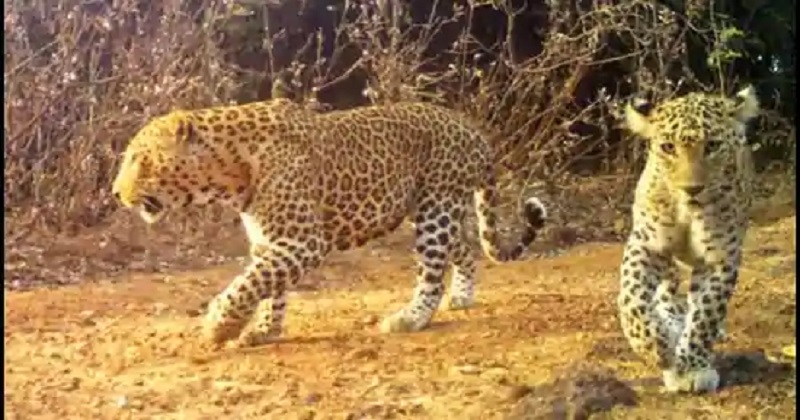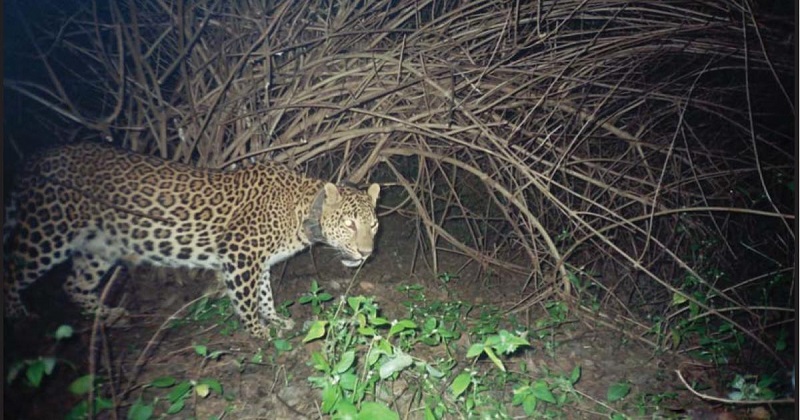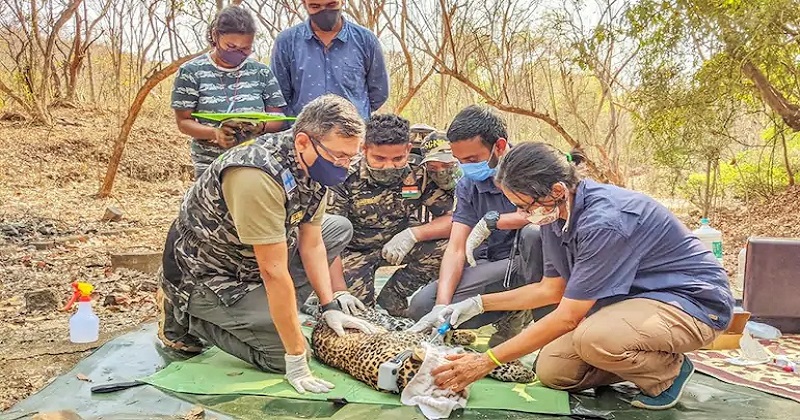
Mumbai; A female leopard was radio-collared and liberated back into the forest at the Sanjay Gandhi National Park (SGNP) in Borivali on Saturday. Three-year-old Savitri is the first leopard to be radio-collared at SGNP.”The belt around Aarey, Film city, and SGNP is her territory. We have decided to name this three-year-old leopard Savitri after social reformer and educationist Savitribai Phule. We are hoping that Savitri will help us understand leopards better,” said G Mallikarjuna, Chief Conservator of Forests.

Under this plan, a total of five leopards will be radio-collared and traced. The collars operate by transmitting signals to a satellite, which then sends the data to researchers, who can review where the animal is and what it is doing.”To understand and study these big cats of Mumbai better, there is a need to use better technologies available, like using satellite collars, etc. This particular study will play a key role in helping the forest department and researchers answer questions like their land-use patterns, their movements across roads with busy traffic, how they avoid humans, etc,” he said.

Dr. Vidya Athreya of Wildlife Conversation Society (WCS), who is heading this collaborative scheme with SGNP, said leopards are remarkably furtive animals which is why very few are comprehended about them. So far, SGNP has been practicing camera maneuvers to observe leopards.”This project involves GPS telemetry, where radio collars that communicate via satellite and send locations to the researchers will be used on a total of five leopards, of which three are females and two males,” said Athreya.
The key features of this project are to acquire information on how humans and leopards communicate with each other, and how each accommodates the proximity of the other. The collars will support collect information on how leopards move over major roads such as Ghodbandar Road and learn their usage of space and time in the SGNP landscape. It will also assist provide control instructions regarding the process the leopards move in the landscape and fight reduction based on the outcomes of the research.

Post Your Comments